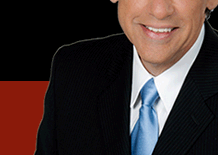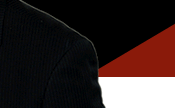
|
Weekly
Features
The Other Side of the Control Room Glass |
 Bill
Pasternak, (ham radio call letters WA6ITF), is an oddity in
our profession: a Broadcast Engineer who can write outside of
the realm of technical publications. He works as a Broadcast
Engineer with KTTV Fox 11 / UPN 13 Television in Los Angeles
and private Broadcast Consultant specializing in the design
of video post production facilities. He is the co-founder and
Managing Editor of the all-volunteer Amateur Radio Newsline(tm)
bulletin service and Creator/ Administrator of the annual “ARNewsline(tm)
Young Ham of the Year Award” program. He is the author
of three books, production staff member to several educational
films and videos including Co-Producer of the award winning
“Amateur Radio Today,” authored the “Looking
West” column for 73 Amateur Radio Today Magazine for 26
years, currently writes the monthly “VHF, FM and Repeater”
column for Worldradio Magazine, is a contributing writer to
several broadcast trade publications and is a frequent contributor
to CQ Magazine. He is a member of the ARRL, Radio Club of America
and Quarter Century Wireless Association as well as a founding
member of the Hollywood Hills QRP Contest Club. Bill is the
only person ever chosen to be recipient of both the prestigious
Dayton Amateur Radio Association’s “Specific Achievement”
(1981) and “Radio Amateur of the Year” (1989) awards.
He also was presented the ARRL National Certificate of Merit
(1995) in recognition of his contributions to the “furtherance
of the goals of the Amateur Radio Service.” Bill and his
wife Sharon (KD6EPW) reside in Santa Clarita California with
their two “puppy people” and can be reached by e-mail
to billwa6itf@aol.com
or wa6itf@arnewsline.org. Bill
Pasternak, (ham radio call letters WA6ITF), is an oddity in
our profession: a Broadcast Engineer who can write outside of
the realm of technical publications. He works as a Broadcast
Engineer with KTTV Fox 11 / UPN 13 Television in Los Angeles
and private Broadcast Consultant specializing in the design
of video post production facilities. He is the co-founder and
Managing Editor of the all-volunteer Amateur Radio Newsline(tm)
bulletin service and Creator/ Administrator of the annual “ARNewsline(tm)
Young Ham of the Year Award” program. He is the author
of three books, production staff member to several educational
films and videos including Co-Producer of the award winning
“Amateur Radio Today,” authored the “Looking
West” column for 73 Amateur Radio Today Magazine for 26
years, currently writes the monthly “VHF, FM and Repeater”
column for Worldradio Magazine, is a contributing writer to
several broadcast trade publications and is a frequent contributor
to CQ Magazine. He is a member of the ARRL, Radio Club of America
and Quarter Century Wireless Association as well as a founding
member of the Hollywood Hills QRP Contest Club. Bill is the
only person ever chosen to be recipient of both the prestigious
Dayton Amateur Radio Association’s “Specific Achievement”
(1981) and “Radio Amateur of the Year” (1989) awards.
He also was presented the ARRL National Certificate of Merit
(1995) in recognition of his contributions to the “furtherance
of the goals of the Amateur Radio Service.” Bill and his
wife Sharon (KD6EPW) reside in Santa Clarita California with
their two “puppy people” and can be reached by e-mail
to billwa6itf@aol.com
or wa6itf@arnewsline.org.
|
|
|
Ed Note: In case you have not figured it out
by now, this story is more than one about a man making a dream
come true and documenting it for posterity. I like to think
that it is really about the “magic” that brought all
of us together because of a love we shared in radio communications
through our hobby. Here in Part 2 you will get to meet a lot
of those who worked on this project. That includes a number
of your fellow newspeople who shared in Roy Neal’s dream
and who donated their time and talent to make the flight and
the documentary succeed. In fact, you will go on the road and
spend time with us as we all work to conquer “Amateur Radio’s
Newest Frontier.”
SAYING GOODBYE - Part 2
If there was a person who flew in space, the late Roy Neal of
NBC Network News knew them personally. Among that group was
NASA Astronaut Dr. Owen Garriott whose ham radio call letters
are W5LFL. When NASA assigned Garriott to be a crew member for
the STS-9 flight the idea of a ham radio operator on the air
from an orbiting spaceship took root once again. As I said last
week, it would be Roy Neal who would make it happen and who
would document it on video for the world to see.
Before going to NASA with the idea, Roy knew he had to have
the backing of the nation’s 700,000 radio amateurs. To
that end, he approached the then president of the American Radio
Relay League (ARRL), the late Victor C. Clark (W4KFC). The three
of us caught up with one another in April 1981 at a rather interesting
gathering called Hamvention® in the Dayton suburb of Trotwood,
Ohio.
How does one describe Hamvention? Trust me, it’s not easy
but I’ll try. Imagine a gigantic building with 165,000
square feet of exhibit space, a main arena, four exhibition
halls, a conference center, a pub, a golf course and is surrounded
by over 20 acres of on-site parking. Inside you find just about
every new and interesting high-tech hobby radio goodie you can
imagine. There are also four seminar rooms going all day with
some of the nation’s top telecommunications experts speaking
on a myriad of subjects. Outside, 15 of the 20 acres normally
used for parking are instead devoted to a flea-market wherein
you will find the history of telecommunications being sold for
pennies on the dollar to those who have interest in radio memorabilia.
It’s truly a radio hobbyist’s “nirvana,”
and its where Roy Neal suggested to Victor Clark that the ARRL
come on-board as one of the sponsors of the first-ever manned
ham radio station to operate from space.
It did not take very much convincing. Vic Clark was one of those
men of vision who -- if you are lucky -- will pass through your
life. On the spot, Vic pledged the full support of ARRL, as
did those representing AMSAT -- the Amateur Satellite Corporation.
Until that time AMSAT had only been involved in the development
of unmanned satellites for exclusive use by licensed radio amateurs
world-wide. Putting a man into orbit carrying a ham radio set
was the obvious next step that AMSAT would not pass up. Then
AMSAT Vice President Vern Riportella (WA2LQQ) was another visionary
who said: “...count us in too.”
The organizational structure was simple. AMSAT would develop
flight hardware (radio gear) that could operate within the constraints
that all figured NASA would place on such a project. The ARRL
would act as the voice of the ham radio community in developing
an educational program to be used if the flight occurred while
lending its stature to the request. Roy and Dr. Garriott would
make the formal request to then NASA Administrator Jess Moore,
while at the same time Roy would document the entire program.
Being a broadcast journalist, doing it on videotape would be
the method of choice. This latter aspect is where I, and a couple
of other "ham radio operators in the media,"came in.
I vividly recall sitting in Roy’s office at NBC Burbank
and our brainstorming a title for the upcoming show. In conversation,
we realized that this was really something new for the hobby.
In effect it was a chance for the average citizen who had passed
an Amateur Radio exam and then licensed by the FCC (or other
nation’s telecommunications regulator) to talk directly
with a man in Earth orbit. It was truly a new frontier for the
hobby and those in it. The title for our video project was soon
obvious: “Amateur Radio’s Newest Frontier” --
or “Frontier” as we who were involved came to call
it.
Oh yes. Did I forget to mention that plans called for two versions
of the same show? We would do a pre-flight version to tell the
world of Amateur Radio what was in the offing. After Owen returned
to Earth we would re-edit and put out a version that took the
viewer from inception of the idea of a ham radio operator in
space, through the flight, post flight debriefings and the reaction
of hams around the world to this achievement. And we would do
it on a minuscule budget, using a lot of volunteer help from
broadcast professionals in the ham radio community.
Roy believed in having small, close-knit production teams. The
group he assembled to put together “Frontier” started
out with an associate of Roy’s at NBC and a mutual friend:
Alan Kaul (W6RCL). Alan became producer and co-writer of the
script with Roy. I took on the roles of Field Producer and Technical
Director. That left one essential position to fill; that of
the show’s video editor. Since this was to be an all-volunteer
gig, we decided to use the various ham radio news publications
of the day to put out a call.
It only took one try. Within a few days Roy heard from Forest
“Frosty” Oden (N6ENV) at CBS Television City in Hollywood.
Not only would he give his time and talent to this project,
he would also introduce us to the “powers that be”
at TV City to see if we could “post” the show there.
It was one of those offers that is too good to ignore. A few
weeks later the deal was signed and we would edit at TV City
in the overnight off-hours at a significantly reduced rate.
The “team” and the “post facility” were
in place. Now it was time to get on-the-road.
It literally was going on the road, both locally and nationwide.
The vision that Roy and Alan came up with required shooting
at ARRL Headquarters in Newington CT., and a number of NASA
facilities around the country. This included the Goddard Spaceflight
Center in Greenbelt Maryland, the Kennedy Space Center at Cape
Canaveral Florida, the Marshall Spaceflight Center in Huntsville,
the Johnson Space Center in Houston and the Jet Propulsion Center
out here in Pasadena. Each locality was integral to the flight
and/or the Amateur Radio operation that would take place from
the mid-deck of the space shuttle Columbia.
With money at a premium, it was decided to only hire people
where volunteers were not available. Roy and I would make one
big swing around the country carrying only our clothing and
videotapes. Not much you say? Well keep in mind that this was
the early 1980s. Betacam SP had not yet become the tape format
of choice. We were shooting those fairly large 20 minute Mini
U-Matic loads that probably weighed in at about 1/3 pounds each
in their plastic boxes. We figured we would need at least two
dozen tapes on this trip so we bought them all from the same
supplier and from the same production run (Fuji for those interested).
We then headed off to begin the process of putting the concepts
developed by Roy and Alan onto tape.
Our first stop would be one of or most fortuitous. It seemed
to make sense to go to the most distant point first and then
work our way back home. As Roy had an assignment for NBC before
he could take off on vacation for this labor of love, we decided
to meet up in New York City and then drive the 80 or so miles
to ARRL Headquarters. The ARRL had already arranged to have
a local videographer for us complete with gear. All we had to
do was to show up and roll tape.
The cameraman turned out to be a guy named George Barker (NA1F),
who at the time was a news photographer for WTIC in near-by
Hartford. WTIC was a station owned by a ham radio operator named
Arnold Chase who just happened to hold the ham radio call letters
WA1RYZ. Chase not only gave us the service of George Barker,
but supplied the camera, recorder and lights as well. As Roy
worked his way through ARRL Headquarters and interviews with
key people involved in the ham radio in space adventure, neither
of us had any idea that George Barker would become a key member
of our volunteer production team for years to come.
Once completed in Connecticut it was a quick drive to La Guardia
Airport in Queens N.Y. where we would board an aging DC-9 owned
by the now defunct New York Air for a one hour trip to Washington
National. The trip down was fine. Where else could you get bagels,
lox and cream cheese for supper? The problem was getting our
two dozen U-Matic tapes being hand carried in a pair of duffel-bags
past security.
We just happened to be in a line where the inspector was --
shall we say -- “ultra thorough.” As the tapes passed
through the X-ray and he kept leering at the screen. We asked
what was wrong and he said he didn’t know what those things
were. We attempted to explain that it was broadcast videotape
and we were making a movie. He insisted on hand inspecting each
and every tape -- including those still sealed in their factory
plastic wrap -- and -- in his own words: “...looking for
the movie pictures.” When he could not find any pictures
he insisted that we could not take our tapes on the plane.
Thankfully, a supervisor noticed that our line was not moving
for close to a half hour and asked his subordinate what was
wrong. Apparently he recognized videotape for what it was, and,
with the sincerest of apologies, passed us through. Thankfully,
Roy had insisted that we get to the airport early. By the time
we boarded the DC-9, they were ready to shut the door.
One bagel and diet Coca Cola later we landed in D.C. where we
met up with another person who would become a key player in
future productions. Again using the ham radio media outlets
we had asked for volunteer camera people with their own gear
and out of Baltimore MD. came S. Larry D’Anna (WA3KOK).
At the time, Larry was the CBS Network News cameraman assigned
to the White House. He took off a few days to be both our crew
and chauffeur in the D.C. area. He got us to our hotel, had
dinner with us so we could plan the shoot, picked us up the
next morning, worked with us two full days and dropped us at
Baltimore-Washington International for our early evening flight
to Orlando.
One thing I have learned over the years is that a good newsperson
knows how to think on his or her feet. A top reporter recognizes
a chance to make a story even better if the pictures and sound
suddenly become available. And as those of you who knew Roy
will attest, in this area he was among the very best. In this
regard, one incident stands out in my memories.
While at Goddard we were to shoot a bunch of exteriors and a
few interviews. Because of personnel availability on the part
of AMSAT (which had its unofficial home there), the interviews
were spread out over a 48 hour period. So we had more than a
bit of free time to walk around and see the sights. With no
place to lock up the gear, we dragged the HL-79 and BVU-110
with us. And it was while on one of these jaunts that the three
of us came across a group of Junior High aged kids deeply involved
in some space science experiments their our own. The sign above
them said “Project Postar.” None of us had any idea
who the kids were or what the project was about. No matter.
I could almost see the thought patterns evolving in Roy’s
head. He had already worked these youngsters into the show.
Nor did we have to tell Larry to shoot. He was rolling tape
before we could. That’s what being a top news shooter is
all about. These pictures would be an added bonus that would
find a prominent spot in both versions of “Frontier.”
It was kind of hard to say good-bye to Larry. In the short time
the three of us had been together he had become a close and
trusted friend. We had shared far more than just a working relationship.
Through the “magic” that is the hobby of Amateur Radio
we were all now friends for life.
To be continued ... |
|
|
|
|
|
|

















